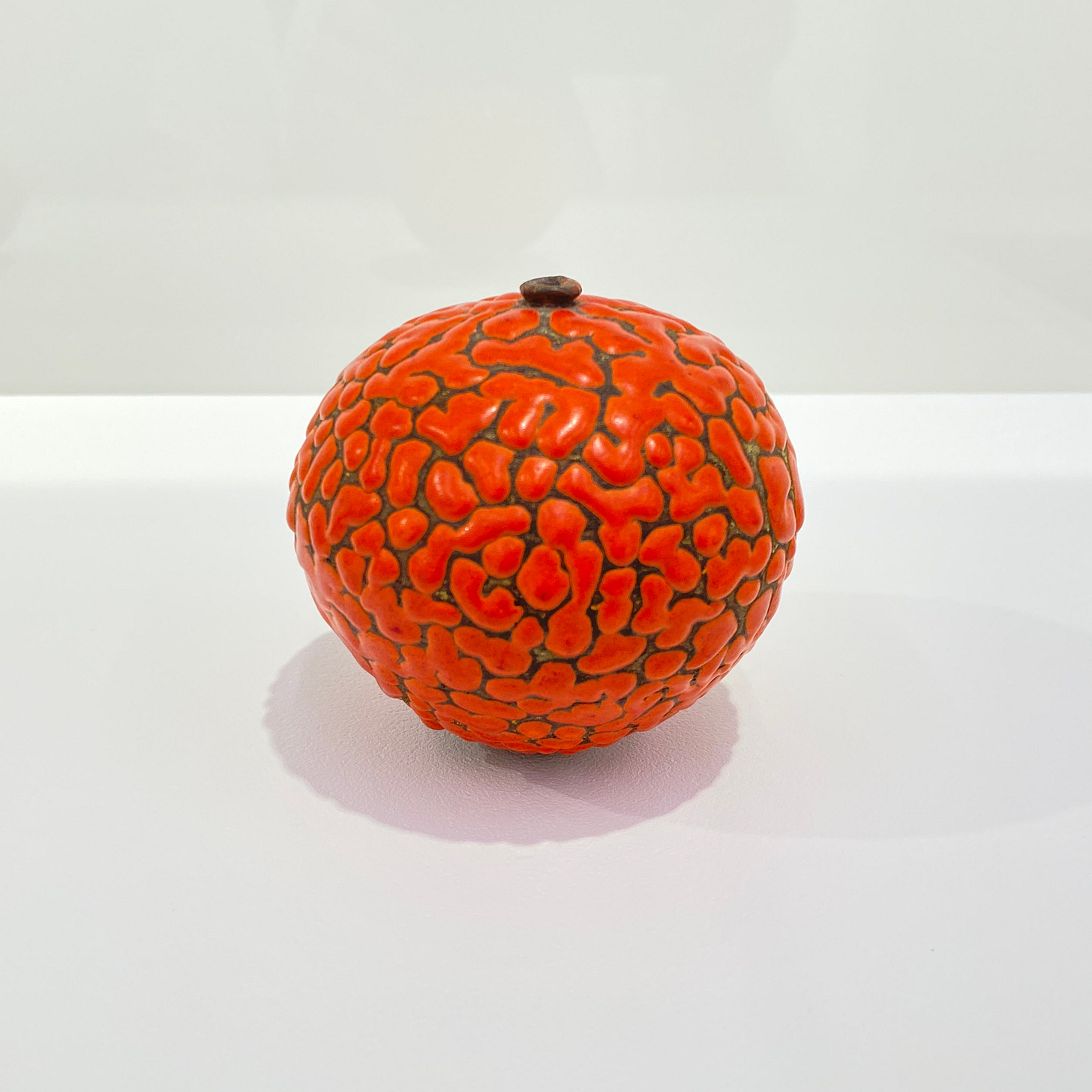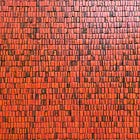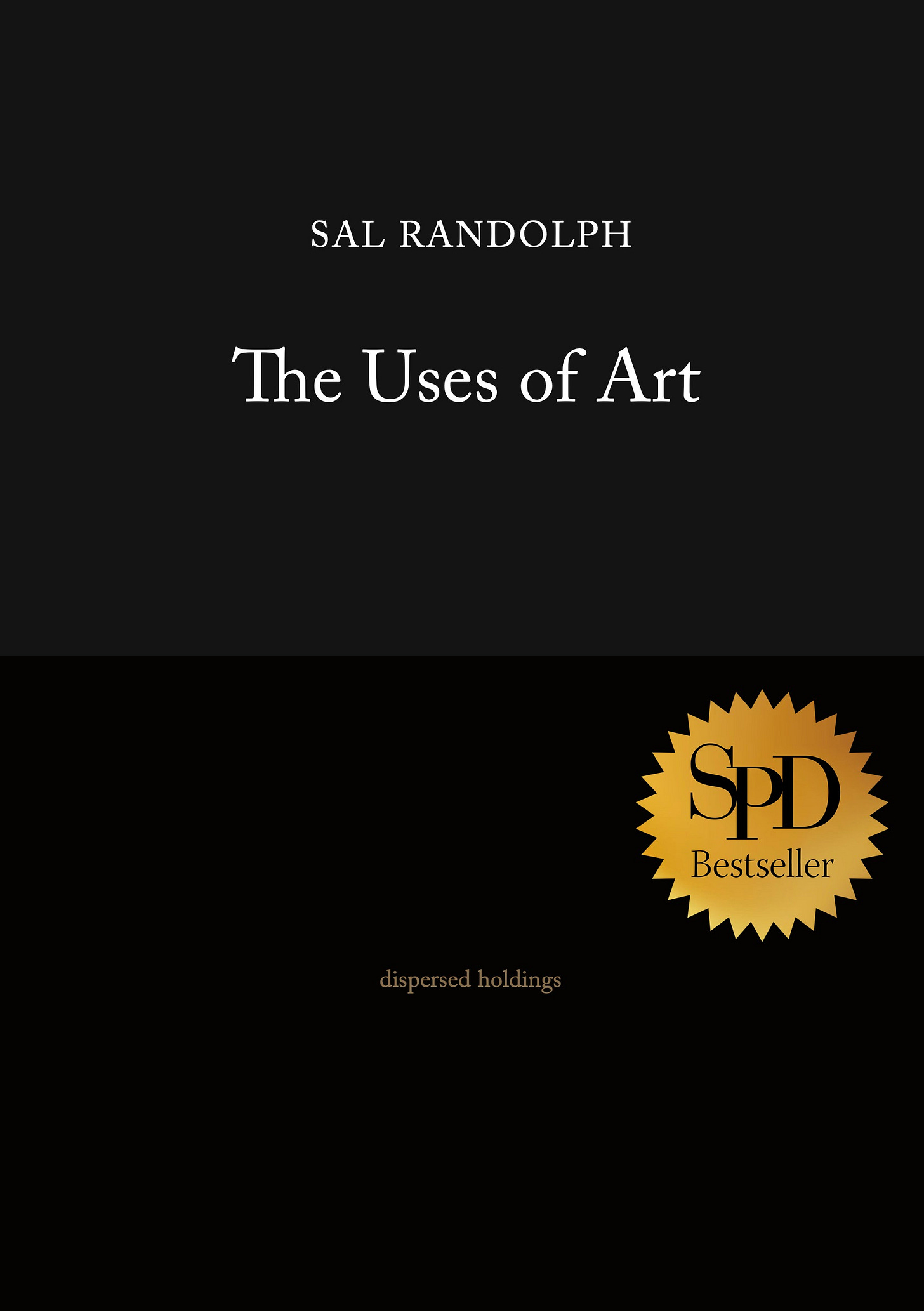
Dear Friends,
I’ve been going to see a lot of art recently, hiking through the hot days into chilled-down gallery and museum spaces. In the middle of doing this, I got an email from my friend Nick in Berlin: “for some reason seeing this made me think of you, actually i bet you've already been to this show… quite apart from the beauty of the pots themselves, the idea of creating a stage for ‘a single wildflower’ is sublime.” He was talking about a show of Doyle Lane’s tiny weed pots from the ’60s and ’70s. I had heard some buzz about the show, but I hadn’t yet found my way to the gallery.
Once I saw them, I kept going back, and I’ll keep returning until it’s gone.
—Sal
Oracle Pot
I found the center of the gallery floor, closed my eyes, and spun slowly—first clockwise, then counterclockwise, then clockwise again until my sense of orientation began to fade. I held my arm out in front of me, and opened my eyes. My hand pointed directly to a vermillion red pot with a crawl glaze. I recognized it immediately from an earlier walk through the gallery. It felt a little bit fated: did I choose it, or did it choose me?
I was in the middle of an exhibition of small ceramics, Weed Pots by the late Doyle Lane at David Kordansky gallery, down the block from where I live. The first time I had stepped into the gallery I felt air rush into my lungs, a deep breath, a deep exhale. As if passing through an airlock into a different atmosphere. An equalizing of the pressure inside and out.
The pots, ninety-eight of them, were placed in rows in plexi cases at eye level. They were arranged as if by a collector, as if by my mother, in beautifully irregular juxtapositions—an intuitive rhythm of varying shapes and glazes. They gave off a stillness and quietude, like lines of buddha figures. They contained themselves.
Doyle Lane was one of the rare Black potters of the mid-century movement. He was also gay, though he was very private about it. It seems he is in a perpetual state of periodic re-discovery.
This show was curated by the sculptor Ricky Swallow who had first come across Lane’s weed pots in the antique malls of Los Angeles. Swallow began collecting the pots, researching Lane, and has now assembled two exhibitions of Lane’s work from private collections.
Lane was born in 1923 in New Orleans, moved to Los Angeles for his education in the early 1946, and afterwards lived and worked in the El Sereno area of LA until his death in 2002. From the beginning of his career, Lane was aware of the racial prejudice that kept Black artists from being included in most gallery shows in the 60s, and at the same time he was buoyed by his own determination and pragmatism, qualities that spurred him to make a living as a ceramicist.
He was a master of glazes and worked for a time as a glaze technician for the industrial chemical supply company, L.H. Butcher. He was especially passionate about red, a notoriously challenging color for ceramicists. As the critic Roberta Smith pointed out in her New York Times review, almost a third of the pots in the exhibition are red, most of them the brilliant warm red of Chinese lacquer. In their small scale, the vividness makes them seem slightly surreal or hyper-real.
In a 1981 interview for Studio Potter, Lane was asked the secret of his intense red glazes. He said:
No secret, just work. Those are chrome reds. The reds are tricky, and you could write a whole thesis on them because they change according to the type of clay or firing you do; whether you do a fast fire or a slow fire, oxidation or reduction. There’s no end to these reds. […] The reds are affected by the weather too, depending on whether it’s cold or warm. Also, the color depends on the stacking of the kiln. Do you have the kiln half-full? Is it packed full? The red colors are susceptible to any atmospheric change so if you’ve got the kiln really heavily packed, it seems to be a hindrance to getting nice, beautiful reds. The fewer things you have in the kiln, the more evenly spaced things are, the more beautiful the reds are.
Weed pots are pots with tiny openings made for a single stem. Lane wasn’t the first to make weed pots, but for him they became the subject of deep investigation, an endlessly varied study of the relation of form and surface. He also loved the weeds that went into them: dried stalks he gathered on the hillside behind his studio.
Most of the weed pots are just a few inches high and could sit in the palm of your hand. Some are egg-shaped, some oblate, some almost spherical, others echo the shapes of larger vases. A few are faceted or squeezed after throwing. The glazes range from smooth coatings to volcanic, bubbling surfaces; there are crackles, speckles, and drips.
There’s a mystery about why these small pieces are so immediately compelling. Would I feel the same way if they were on a shelf in my apartment? What if they were in a display case mixed with other ceramics at the Met? Would I notice one if it were on a table at a flea market or in an antique stall hanging out with other mid-century objects?
On my first visit I saw that the gallery was giving away posters of the weed pots: twenty pots arrayed in a grid against a white background, reproduced at 1:1 scale. I took one and hung it next to my bed, where it replaced Donald Judd staring out at the desert landscape towards Mexico, something the Judd foundation sent me in the mail a while back. When I woke up the next morning, I realized that the poster was, for me at least, all wrong. It was appealing it its own way, but sensation it gave off was nothing like the pots themselves. To be with the pots I would have to go to the pots.
I kept returning. It became a kind of pilgrimage. Walking back to the gallery, the hand of the heat pressed down on me. The voice of the heat whispered turn back. A pilgrimage should have some adversity. By the second visit, the gallery attendants already recognized me, my third visit they waved as if we were friends. Each time I noticed more, saw more.
As I walked through the gallery, a tiny pot with no lip seemed to be silent, as if robbed of speech, and in that one pot’s silence I suddenly see all the other pots around it as making sounds, as tooting with their flared lips in a slightly comical way. They function as a multitude, a many. They are a chorus.
I felt like the pots knew something I didn’t. I had the fantasy of making a deck of divination cards from photos of the pots—98 is a good number for an oracle deck. Then I thought back to the poster: images of these pots were not the pots. This was when I decided to start spinning. If I wanted any kind of answer from the pots, it would have to be now, while we were in each other’s presence.
I felt a little ridiculous closing my eyes in the middle of the gallery and trying to rotate until I lost the sense of where I was. I waited until I was alone. I didn’t want to spin so hard that I knocked into one of the cases, but I did want to forget myself and everything around me. When my eyes opened and locked on the small, red pot, I felt an electric sense of connection. Of course it was this pot.
I spend some time just looking, noticing the tiny lip that emerged straight up with the slightest flare. My favorite kind of lip, I thought, which seemed silly but I meant it with affection. The pot was generously rounded, only a few inches high, and the undulating red glaze gave it an outsized charisma: it had the demeanor of a dragon.
I had spun for an oracle without a question in mind, so for an uncertain moment the pot and I simply regarded each other. Then I asked for its advice.
Tell me what’s going on, it said. And so I talked to the pot about my sense of unease, the feeling that nothing was precisely wrong and yet nothing felt right. Cultivate the empty pot, it said with a laugh, joking-not-joking. The pot knew the 11th century Zen teacher Hongzhi, and the book of his writings called Cultivating the Empty Field. The pot knew me. It gave me the advice I most often give myself: do things for their own sake.
You may think, at this juncture, that it was just me talking to me, but this is how oracles always work. They precipitate something amorphous or hidden in your field of consciousness—they throw formlessness into form. Once you see that form you can think it and act on it.
Now the pot and I were friends of a kind. I didn’t want to leave it. How was I going to take it with me? It sat bright like a ripe fruit, complex like a tropical seed pod. I’ll swallow it, I thought, but it was a little too large for one mouthful. I bit into it, past the red rind into into its sweetness and abundance. Thank you, I said, bite after bite.
Doyle Lane: Weed Pots will be on view at the David Kordansky Gallery in New York through August 4, 2023. The quote of Doyle Lane is from an interview in Studio Potter, Volume 9, Number 2, June 1981. Another source for information on Lane is the catalog Doyle Lane: Weed Pots, published by David Kordansky Gallery with text by Ricky Swallow, Lee Whitten, Dale Brockman Davis and Stanley C. Wilson.
More Doyle Lane
Further adventures and new ways of seeing can be found in my book, The Uses of Art.
Artist Sal Randolph’s THE USES OF ART is a memoir of transformative encounters with works of art, inviting readers into new methods of looking that are both liberating and emboldening.
Dazzlingly original, ferociously intelligent.
— Michael Cunningham
A joyful, dazzling treasure-box of a book.
— Bonnie Friedman
Here’s a guide, to waking up, over and over again.
— Roshi Pat Enkyo O’Hara








Weed pots! What a lowly, wonderful name. I’m smitten. How perfectly this all came together: your friend Nick writing you, the proximity of the gallery, the chatter of the pots.